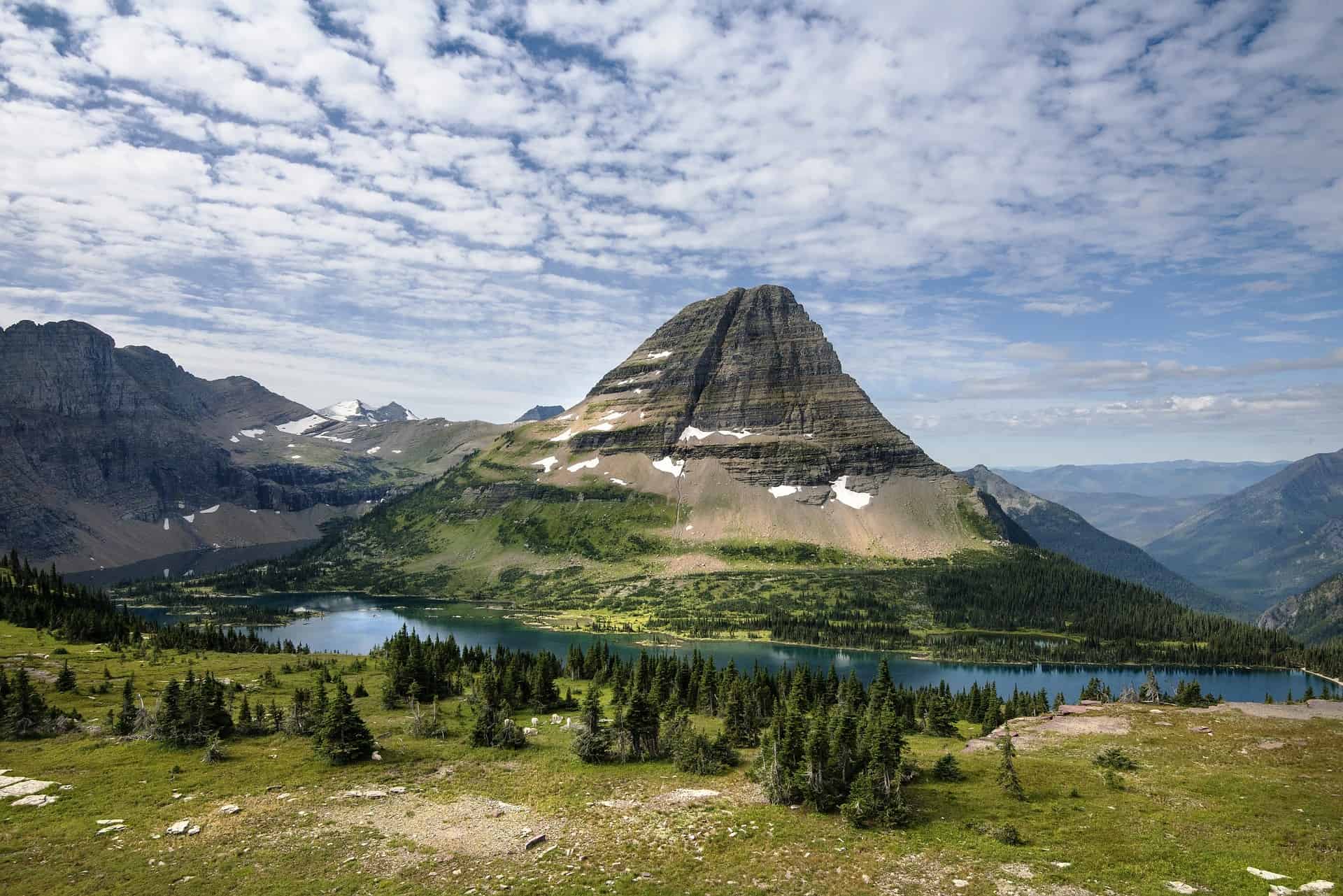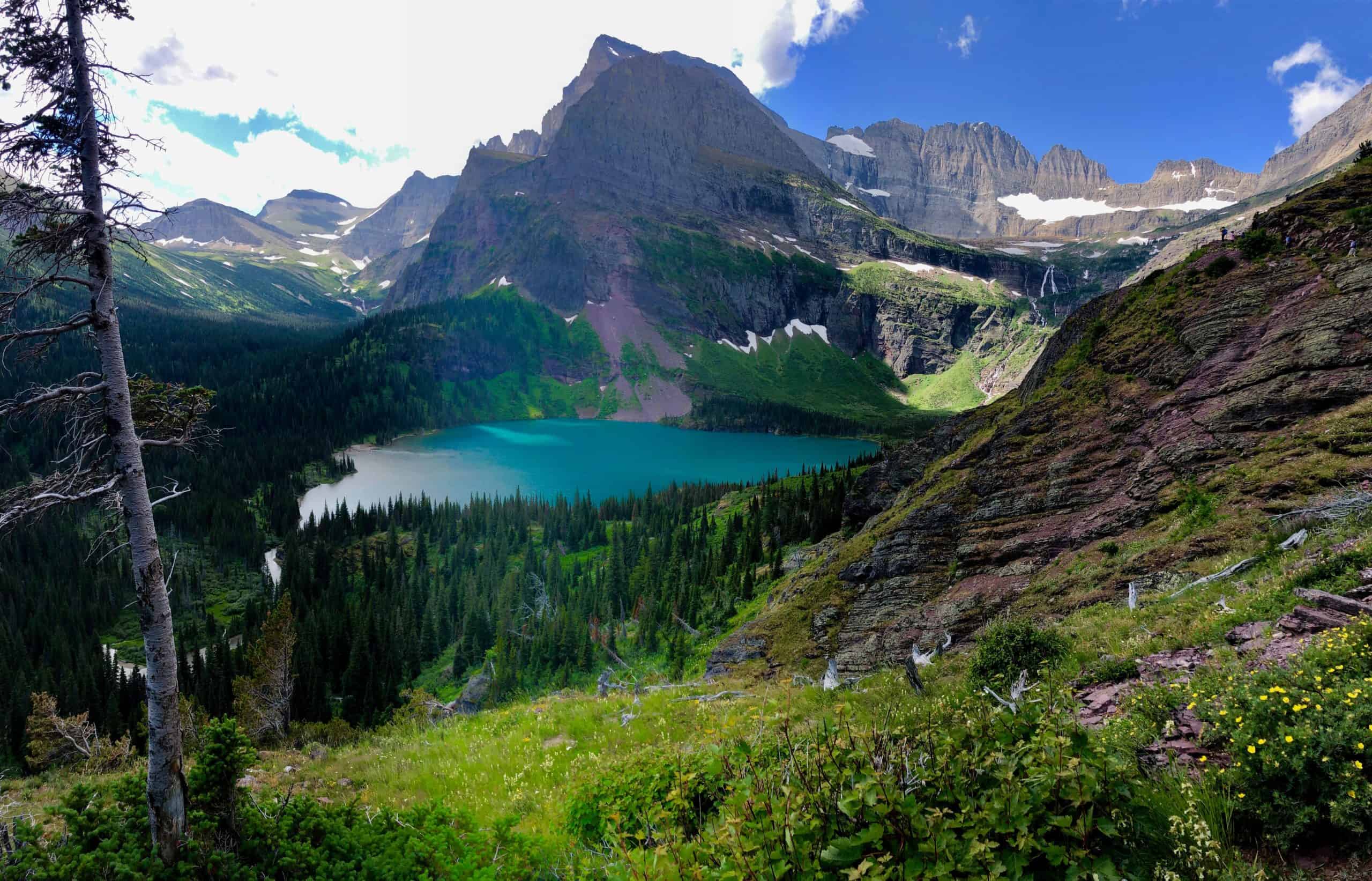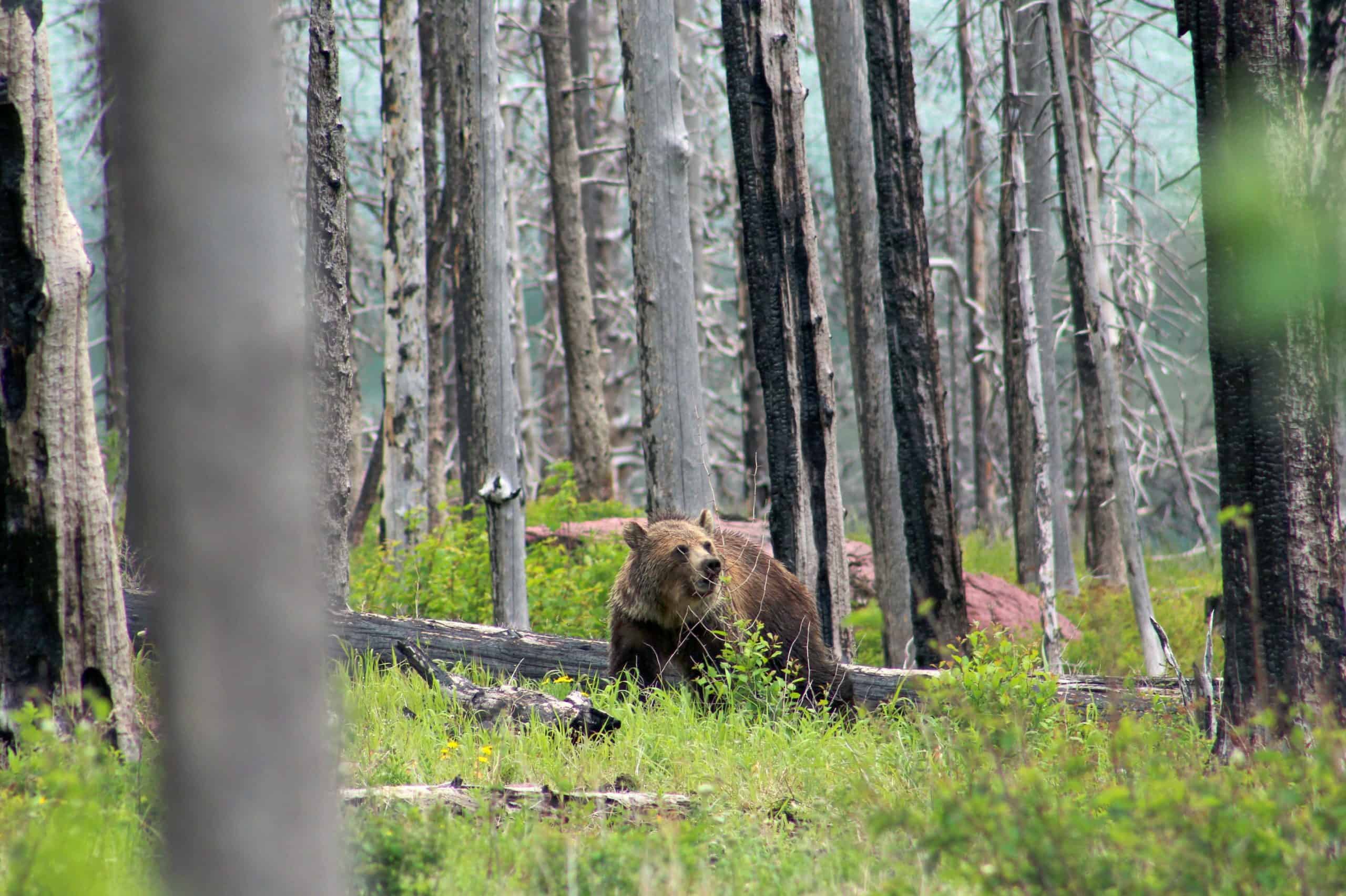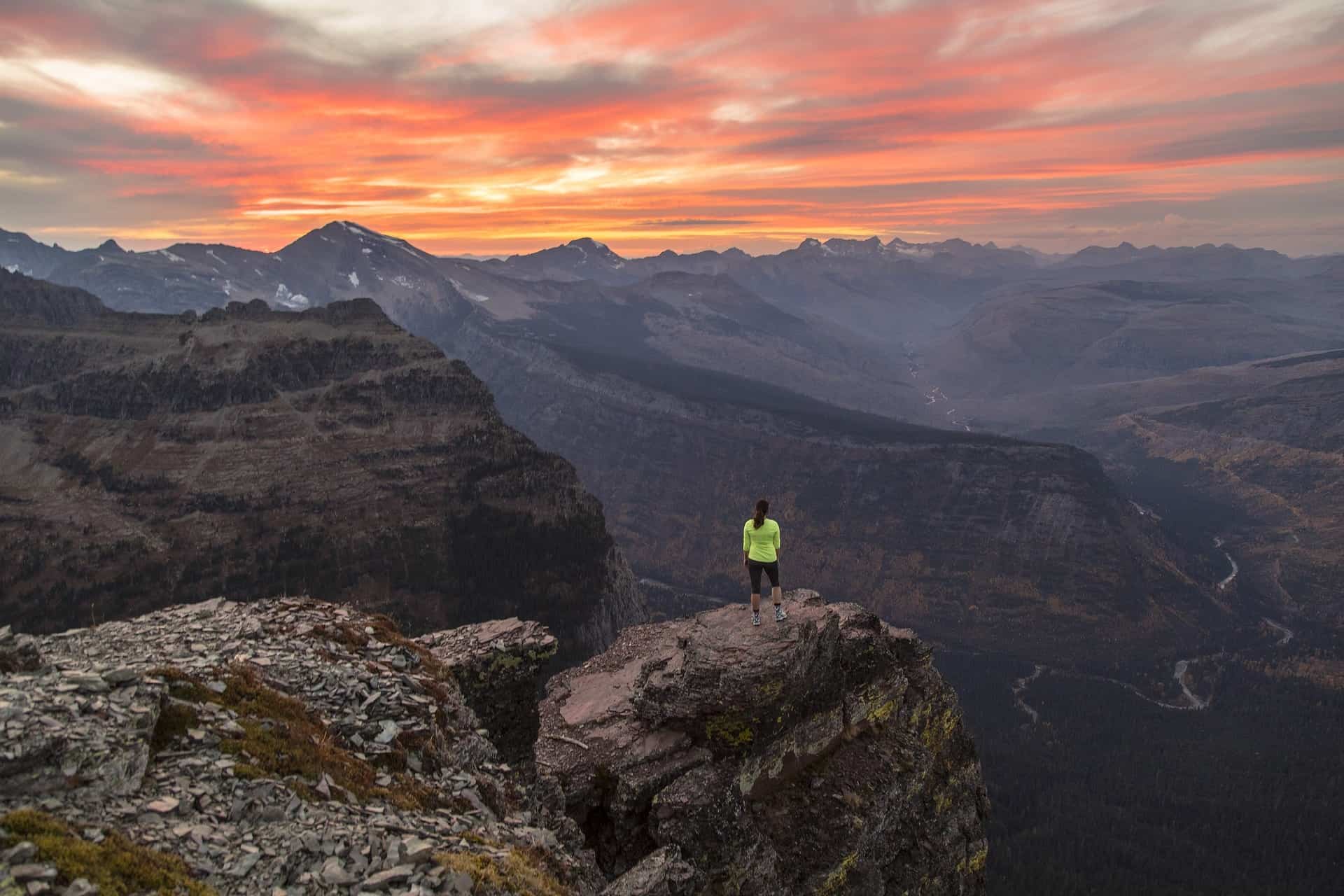Glacier National Park has seen millions of visitors over the years. The visitors come to not only hike but also take in the beauty of this breath-taking wilderness.
Did you know that Glacier is home to over 700 miles of hiking trails? If you would like to try some of the hikes, having information about hiking safety in the park is essential.
Is hiking in Glacier National Park Safe?
Hiking in Glacier National Park is safe, and the park’s visitor centers provide information on the park’s safety and the condition of the trails. Safety hazards such as extreme weather, rough landscape, and aggressive wildlife are common. For this reason, the park has laid down enough safety guidelines.
To navigate the numerous trails, a detailed map of Glacier will go a long way. That is one step in the right direction.
In this article, I have covered in detail the common threats to safety in the park. I have also explained why it is safe to hike in Glacier alone. Further, I have taken you through all-year-round weather in the park and the best timing for hiking. To top it all, I have listed what you should bring with you for your safety.
How to Keep Safe When Hiking in Glacier National Park?

To keep safe when hiking in Glacier National Park, you need to shield yourself from possible safety hazards. This entails more than just following the safety guidelines set by the park. You need to pack enough essentials for all weather conditions and to help find your way around the park.
Additionally, you need to cater to your health and carry equipment that can help you in case of emergencies
I have prepared a safety checklist to help you know what to bring along for a day hike:
- Backpack
- Lots of water to fight dehydration
- High energy snacks
- Waterproof map of the park
- First aid kit
- Sunscreen
- A reliable Lighter
- Hiking boots
- Flashlight/ headlamp
- Hiking poles (can be useful)
- Crampons for snow hikes
- Bear spray
- Bug Spray
Is It Safe to Hike Alone in Glacier National Park?
Hiking alone in Glacier National Park is safe. About a third of the visitors are solo hikers. However, you need to be more careful about wildlife, the weather, and your surroundings. In case of a problem, though, most trails in the park are well-trafficked, and rescue operations are fast.
Like in Yellowstone and Grand Teton, it’s quite normal to find people hiking alone in Glacier. Still, Glacier National Park does not recommend solo hiking.
It is, however, impossible to be completely alone for long. Actually, it is hard to walk in most of the trails for more than 5 to 10 minutes without meeting other hikers.
That said, if you are looking for solitude, visit early July when the visitors’ numbers are low.
The park has over 700 miles of hiking trails with unreliable cellphone reception. Hence, it is easy to get lost, especially in the backcountry.
On the brighter side, the staff at the park’s Visitor Center is quite helpful. You can find all the information you need on the best trails for solo hikers and the park areas to avoid.
Although the staff is helpful, you are expected to take responsibility for your own safety and take care of your possessions.
Best Time to Go Hiking in Glacier National Park?

You can hike in Glacier National Park all year round. Nevertheless, the period from July through October presents the best hiking experience. These are the months of summer and fall when the weather is calm and dry. The trails in both low and high elevation areas of the park are, therefore, easy to access.
Weather Conditions When Hiking in Glacier National Park
Glacier National Park experiences weather in four definite seasons. These are summer, fall, winter, and spring. Like other mountainous areas, sudden weather changes are common in Glacier. Often, the park experiences severe weather conditions. They manifest in thunderstorms, floods, extreme cold, and avalanches.
Here’s an overview of what to expect in every season:
Winter (November-April)
Winter is the longest season in Glacier National Park. The temperature can go way below 32°F/0°C which causes extreme cold and heavy snowfall.
Most of the park trails and most roads, lodges, and visitor centers are closed during winter. If you insist on hiking in winter, I recommend using snowshoes.
Unfortunately, winter also comes with avalanches. These are large bodies of snow that slide down the slope and cause injuries or death of people along their path.
Avalanches occur in sloped areas. The risk of avalanches can further increase when there is heavy snowfall, strong winds, and changing temperatures.
Spring (May and June)
The weather is warmer, with temperature going up to 60°F/16°C during the day. At night, it drops back to about 30°F(-1°C).
In spring, most hiking trails still have snow so they are not opened for use. From early June, snow starts clearing on lower elevations. The park also engages in snow removal in preparation for summer reopening.
Flooding may also occur in spring. Besides rain, which can fall any time in Glacier, the higher temperatures lead to snow melts. Water flows down the slope, and depending on how much snow there is, water sources can flood.
Summer (July-August)
Summer presents warm days and chilly nights. Temperatures can go up to 80°F/27°C during the day and drop to around 40°F/4°C at night.
Thunderstorms are frequent in summer afternoons. When they occur, there’s heavy rain, thunder, and lightning.
Fall (September-October)
The days are still warm, with temperatures ranging from 60°F-70°F/16°C- 21°C. Night temperatures drop to about 40°F/4°C.
Tip: Before heading out to hike, always check the weather forecast and trail conditions at the visitor centers. Also, prepare for all weather conditions.
Wildlife When Hiking in Glacier National Park

Glacier National Park hosts a wide range of wildlife, from little ones like pygmy shrews to large ones like elk. These animals live in various habitats throughout the park.
When hiking in Glacier National Park, you may spot bears, moose, mountain lions, bighorn sheep, elk, lynx, mountain goats, and coyotes. This is an excellent opportunity to see and photograph the animals in their habitats.
On the other hand, getting too close to wildlife can trigger unfriendly encounters that can cause injuries and sometimes death.
Most of these animals will only attack if you get in their way. Females are more dangerous to approach when they have young ones, and males can get more aggressive during mating seasons.
You may see any of the above animals in various parts of the park. Still, they are most common in the areas that I have highlighted below
- Bears – throughout the park
- Mountain goats – on rocky slopes and grassy areas. Good examples include areas around Logan Pass, Hidden Lake, and Iceberg Lake
- Moose – areas with water, tall grass, and shrubs such as the Fishcap Lake area
- Bighorn sheep – mountain slopes and high elevation meadows such as Logan Pass
- Lynx – dense forests, especially in high elevation and open space areas
- Mountain lions – forested areas
- Elk – areas with forests and tall grass. In summer, they remain in high elevations and move to lowers spots during fall
- Coyotes – in grassland areas
Tip: According to the National Park Service, staying at least 300ft (91.4m) away from bears and 75ft (23m) away from other wildlife can keep you safe.
Do You Need Bear Spray When Hiking in Glacier National Park?
Glacier National Park recommends carrying bear spray on all hiking trails of Glacier National Park. This is because the park is home to both grizzly bears and black bears. Also, Glacier has one of the highest grizzly bear populations in the Lower 48 states. As such, you can encounter bears anywhere in the park.
A few statistics on bear attacks? On average, two nonfatal bear encounters occur every year in Glacier National Park. Also, bear-related fatalities since 1967 are only 10. Out of these, only three involved hikers, and only one involved a solo hiker.
When hiking in bear country areas like Glacier, a few tips can prevent a possible encounter. These include:
- Making noise to alert bears of your presence
- Hiking in groups
- Storing food and food scented items away as they attract bears
- Being extra careful in areas with streams, strong winds, and thick vegetation. They make it difficult for bears to detect your approach
- Carrying a can of bear spray to access and use it fast
Does Bear Spray Work?
Bear spray works when used properly. It contains ground pepper that burns the bear’s eyes and nose to scare it off and stop aggressive behavior. This happens when sprayed in the face of a bear. It should therefore be used on a close encounter with a bear and when all other bear safety tips have failed.
Have a look at the YouTube video below. It demonstrates how bear spray works to stop aggressive behavior in bears.
For bear spray to work, the following tips can help you:
- Spray near the bear – 18ft-30ft (5m-9m) distance between you and the bear works best
- Practice with a can of bear spray before using it in a real incident
- Don’t spray against the wind to avoid reversing the spray towards you
- You should be able to get to the spray easy so that you can use it as fast as possible
Final Words
Glacier National Park may extend for over 1 million acres, but it is safe for all hikers, solo or accompanied. Therefore, concern for your safety should not stop you from setting out for a solo adventure of a lifetime. It all boils down to how well you can follow safety guidelines and how responsible you can be for your own safety.
Related: A Complete US National Park List


